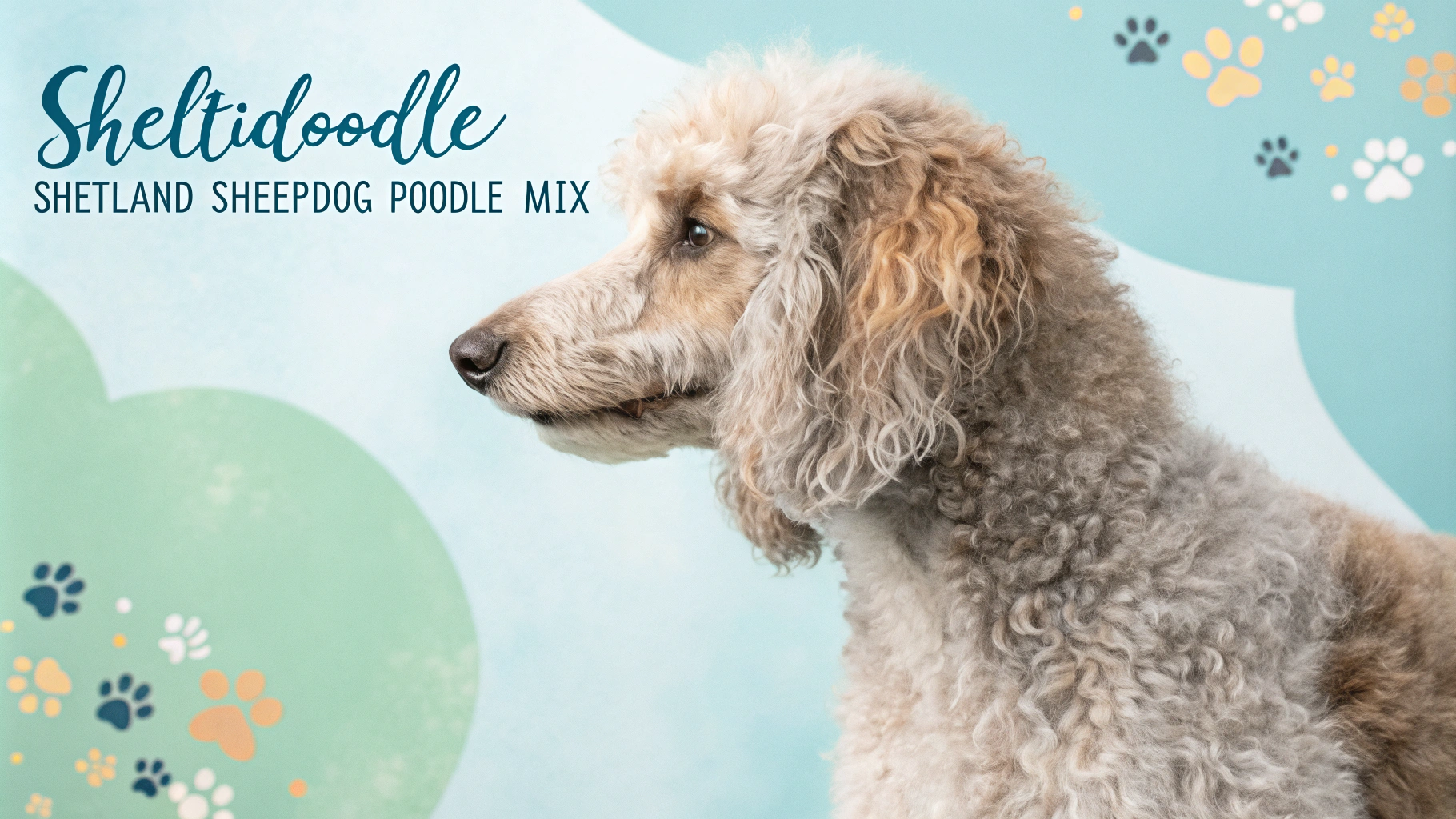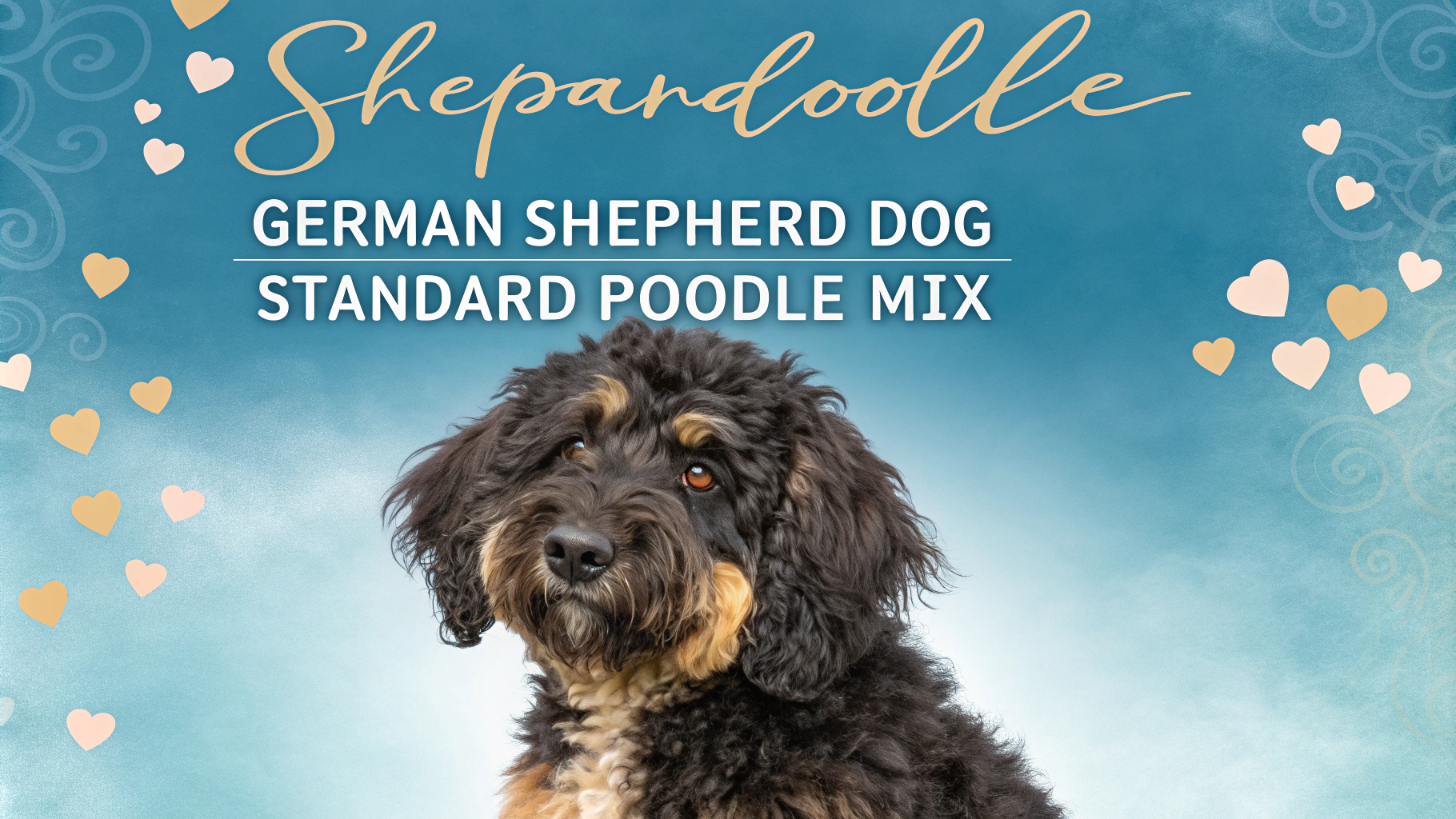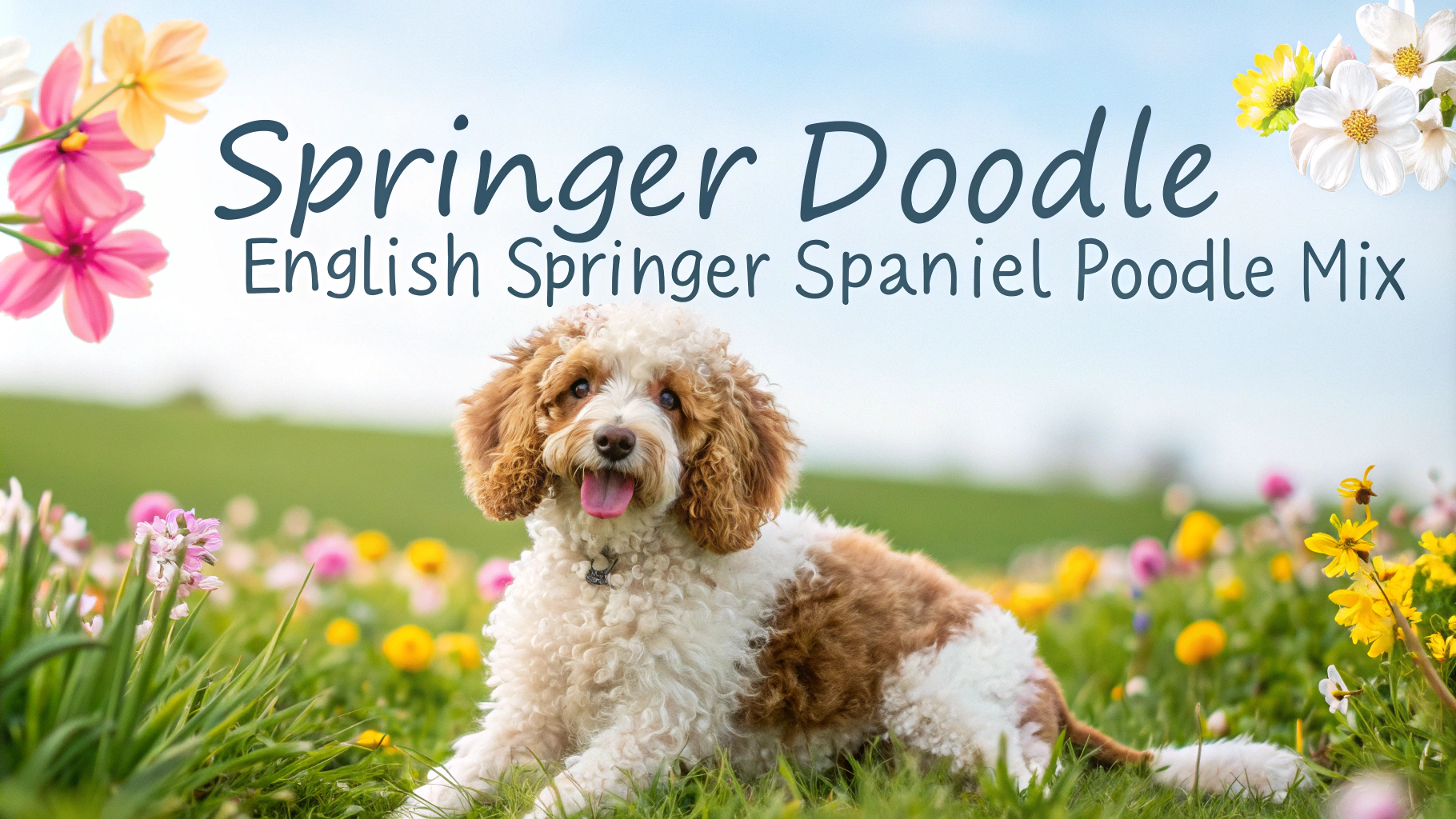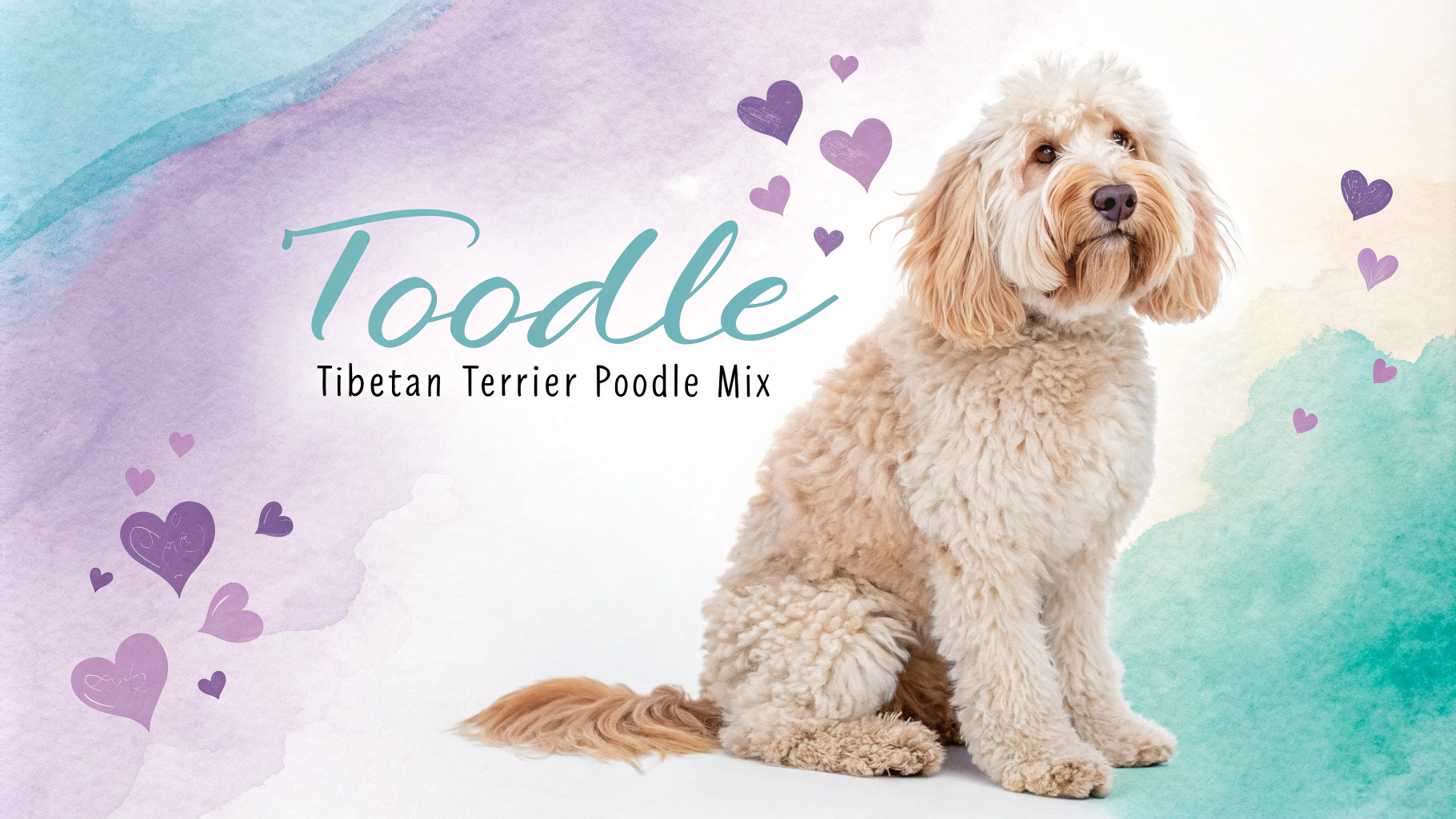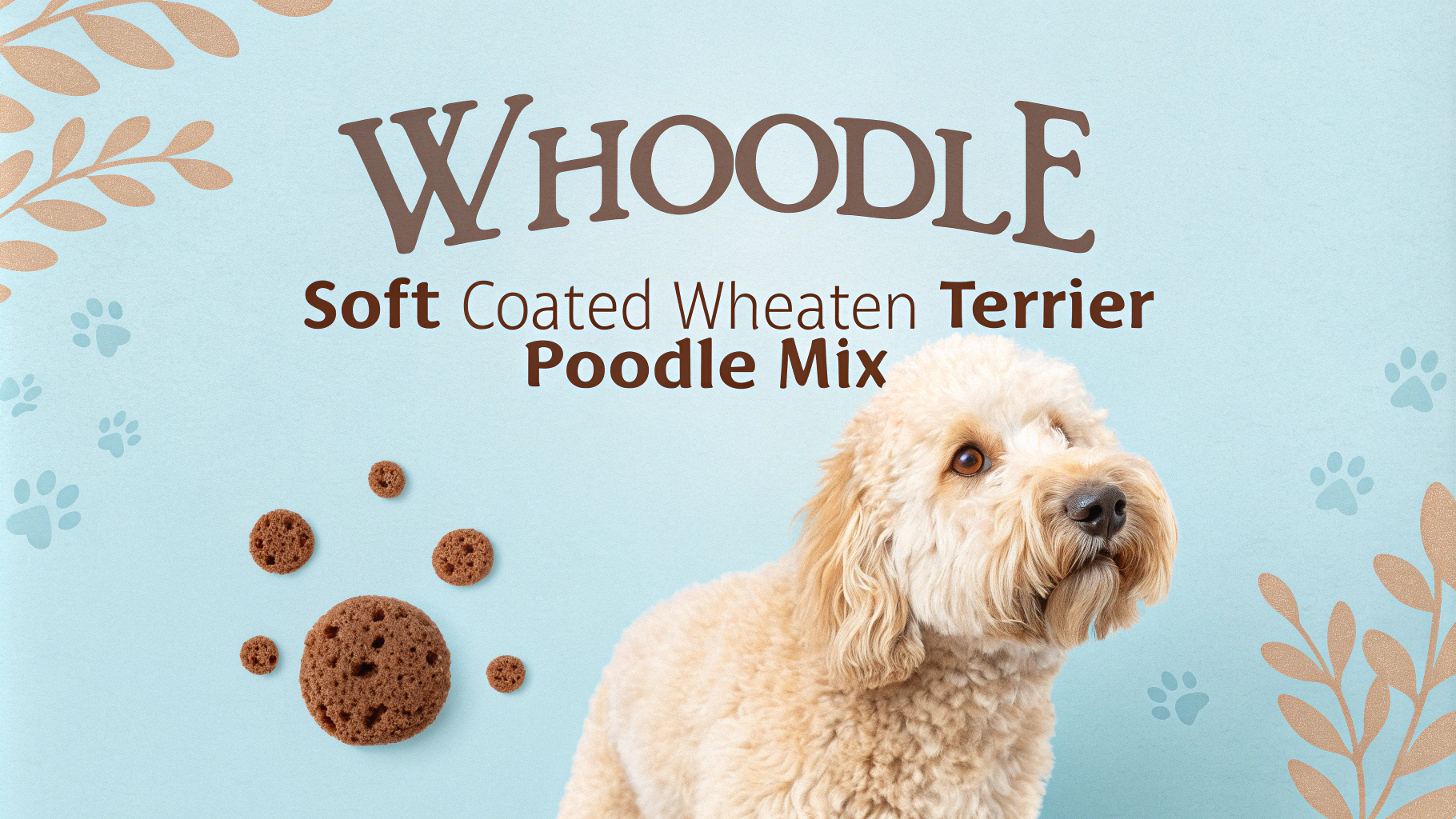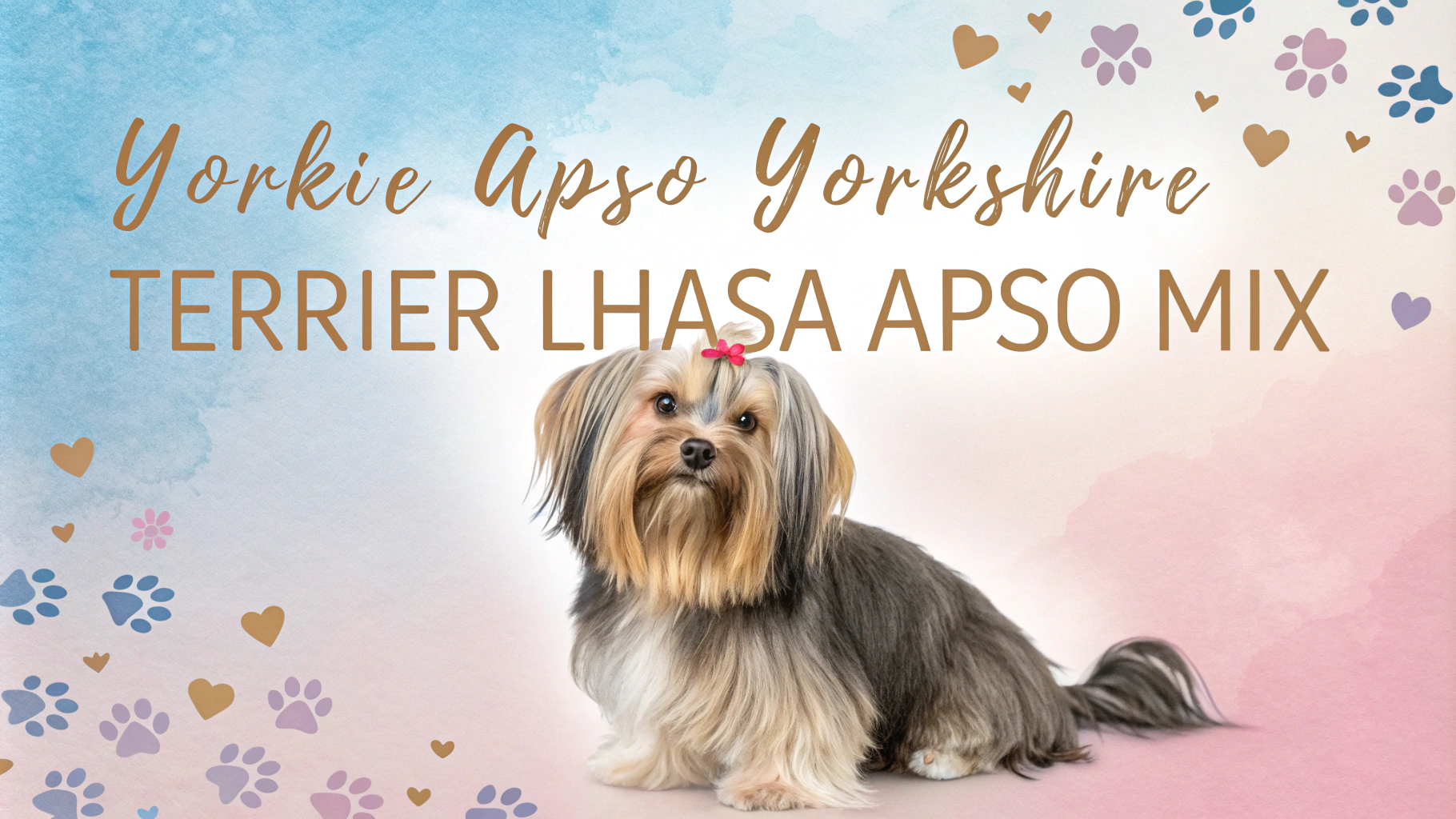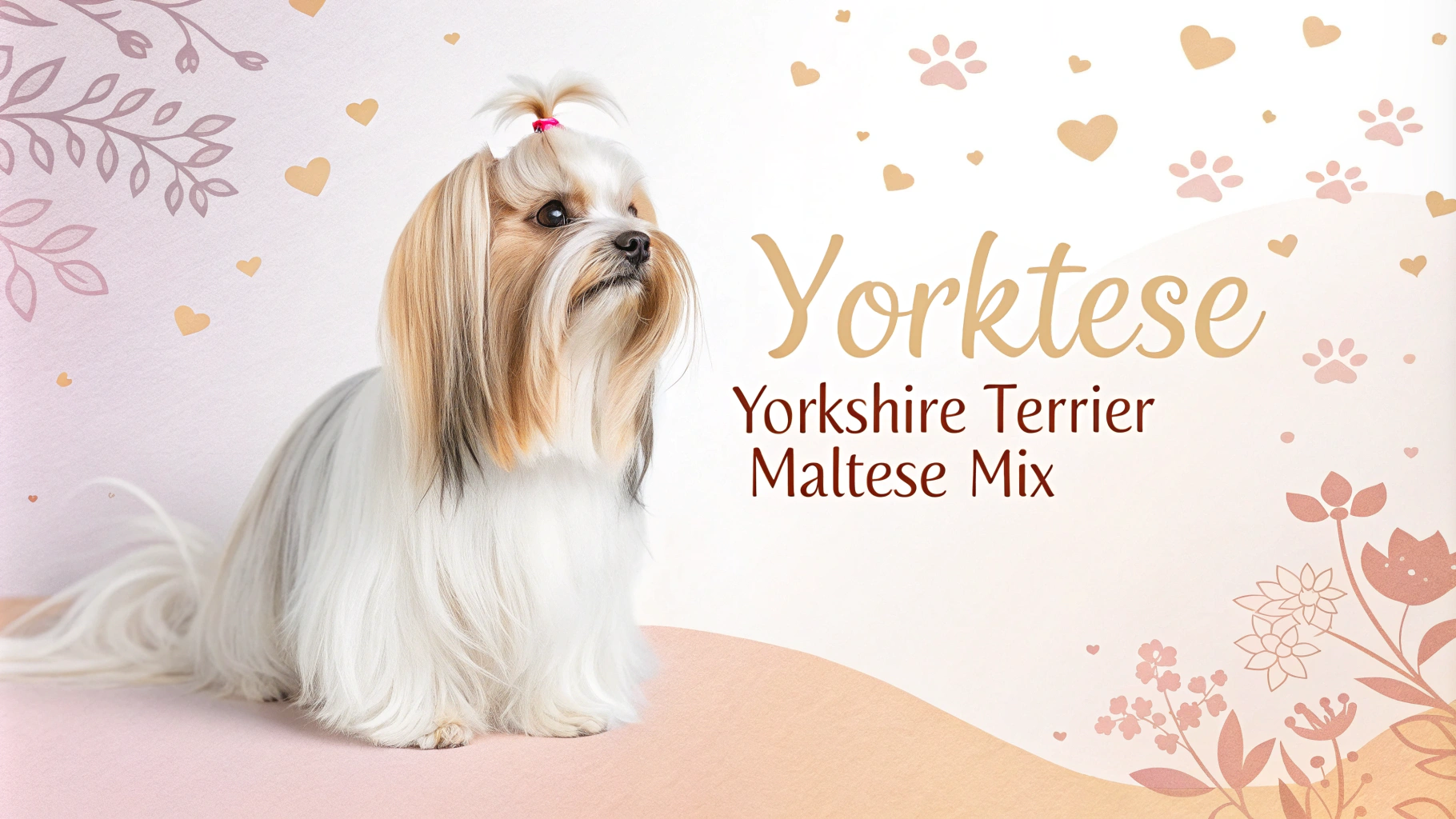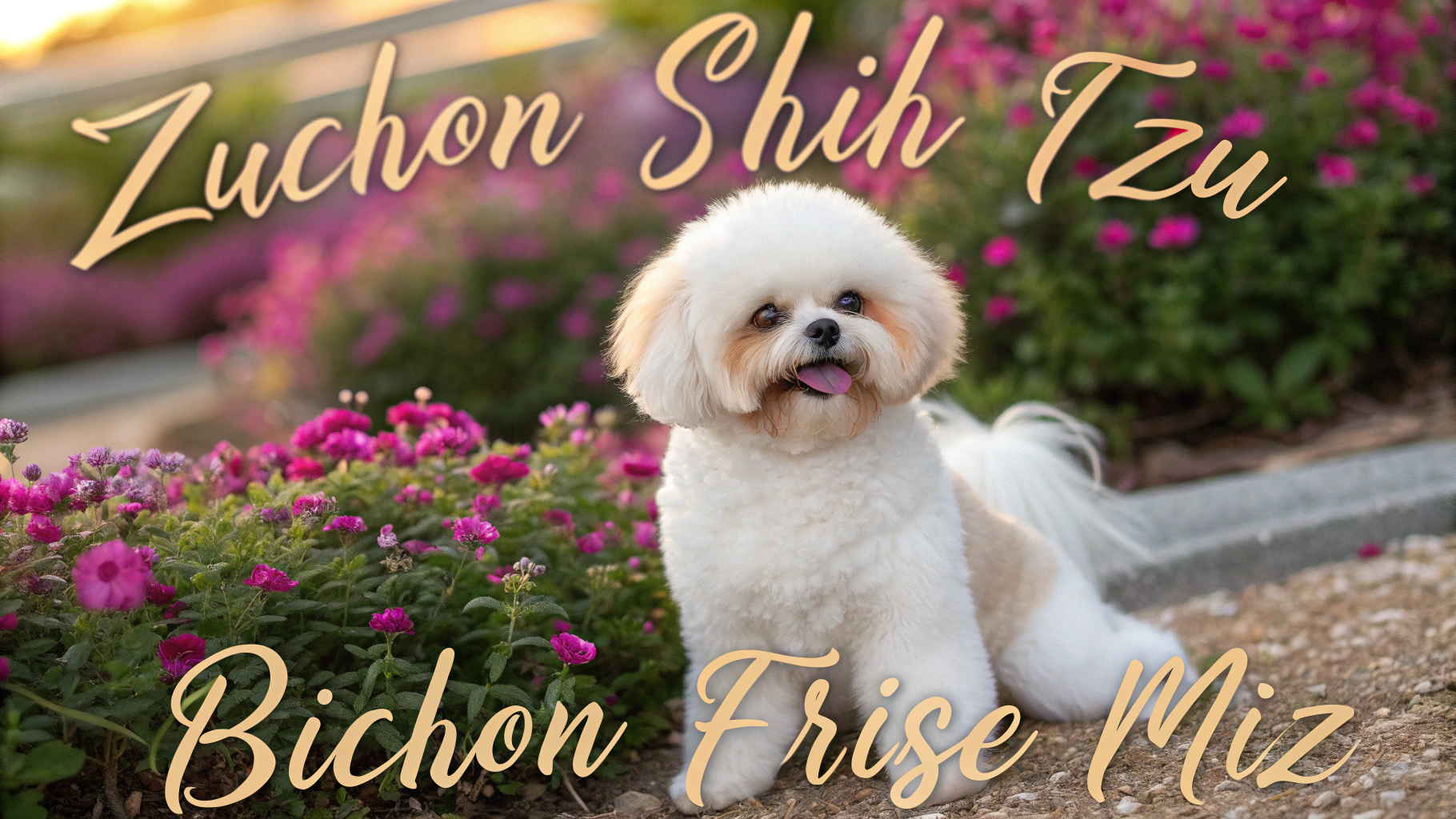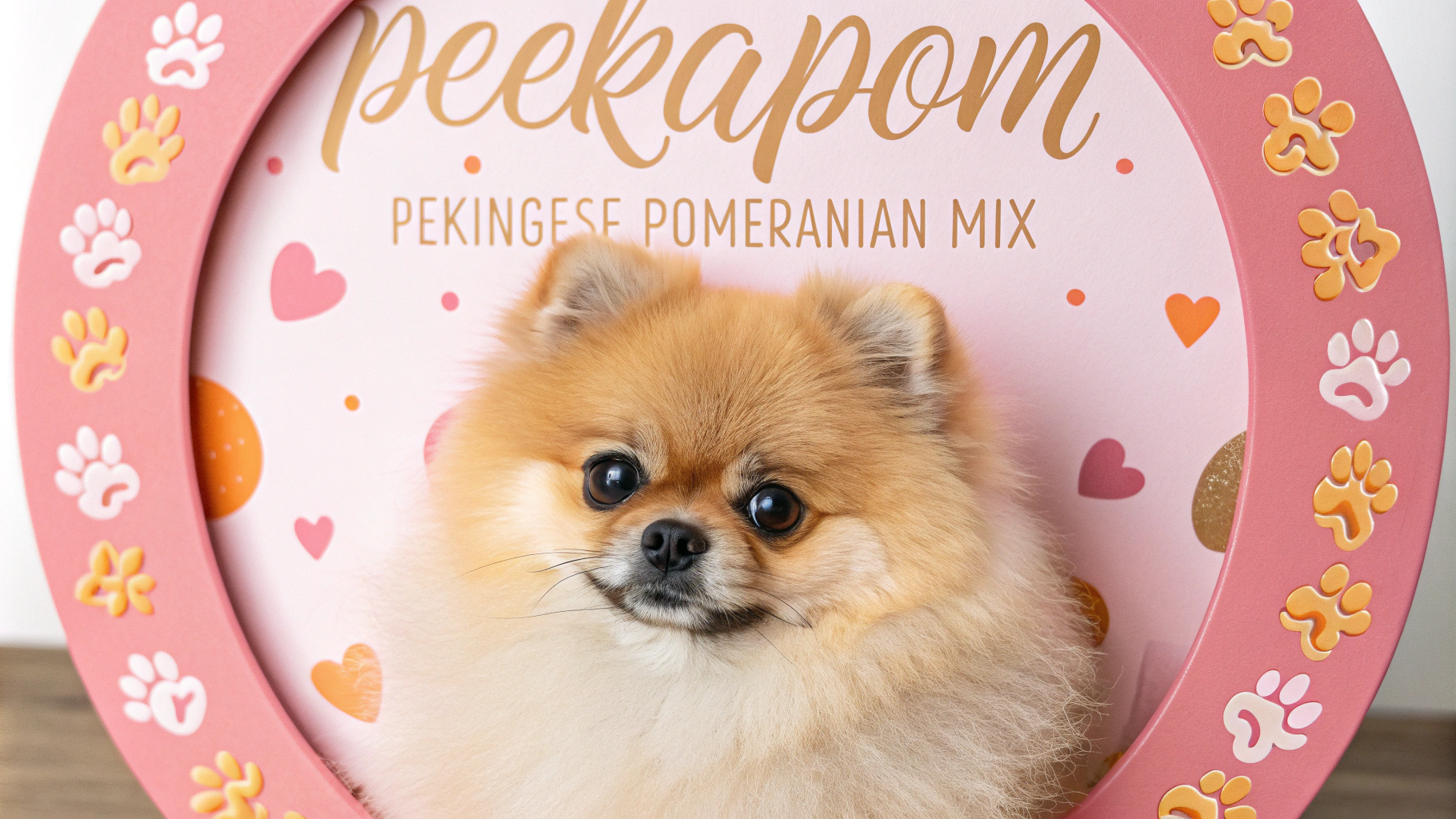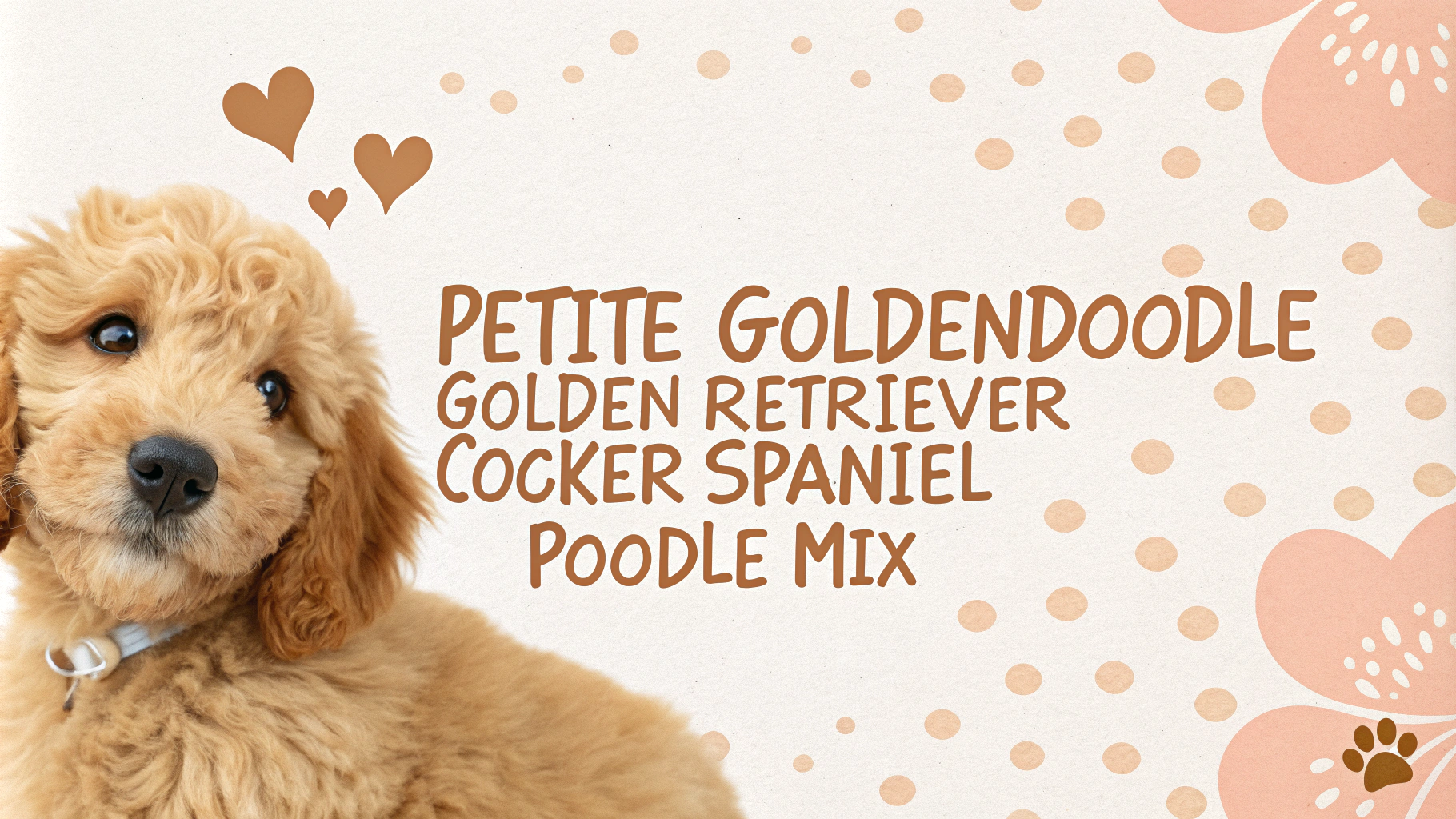The Petite Labradoodle is a designer dog breed that combines the traits of a Labrador Retriever, Cocker Spaniel, and Poodle. This unique mix results in a compact, intelligent, and affectionate companion dog. Petite Labradoodles are known for their friendly nature, adaptability, and low-shedding coats, making them popular choices for families and individuals alike. These dogs typically inherit the best qualities of their parent breeds, including the Labrador’s loyalty, the Cocker Spaniel’s gentle disposition, and the Poodle’s intelligence.
Key Facts
- Size: Small to medium, typically 14-20 inches tall
- Weight: 15-25 pounds
- Lifespan: 12-15 years
- Coat: Low-shedding, can be wavy or curly
- Colors: Various, including black, chocolate, cream, and apricot
- Temperament: Friendly, intelligent, and energetic
- Exercise needs: Moderate to high
- Grooming: Regular brushing and professional grooming recommended
Character Traits
Petite Labradoodles are known for their friendly and outgoing personalities, inheriting the best traits from their parent breeds. They are typically:
- Intelligent: Quick learners and eager to please, making them easy to train
- Affectionate: Love to be close to their families and form strong bonds
- Energetic: Enjoy playtime and require regular exercise
- Social: Generally good with children, other pets, and strangers
- Adaptable: Can thrive in various living situations, from apartments to houses with yards
These dogs are often described as having a “happy-go-lucky” attitude, always ready for fun and adventure. Their intelligence and eagerness to please make them excellent candidates for obedience training, agility, and even therapy work. Petite Labradoodles are known to be gentle and patient with children, making them great family pets. However, they may inherit the Labrador’s tendency to chew, so proper training and plenty of appropriate chew toys are essential.
History & Origins
The Petite Labradoodle is a relatively new designer breed, emerging as part of the broader Labradoodle trend that began in the 1980s. While the exact origins of the Petite Labradoodle are not well-documented, it is believed to have been developed to create a smaller version of the standard Labradoodle. The breed likely originated from crossing a Labrador Retriever with a Miniature or Toy Poodle, and later introducing Cocker Spaniel genes to further reduce size while maintaining desirable traits.
The creation of Labradoodles is often attributed to Wally Conron, who first bred them in Australia in 1989 as guide dogs for individuals with allergies. The Petite Labradoodle followed as breeders sought to create a more compact version of this popular mix. While not recognized by major kennel clubs as a distinct breed, Petite Labradoodles have gained popularity as family pets due to their friendly nature, intelligence, and potentially hypoallergenic coats.
It’s important to note that, as with all mixed breeds, the traits and characteristics of Petite Labradoodles can vary significantly depending on which parent breeds are more dominant in each individual dog. Responsible breeding practices are crucial to maintain the health and desirable traits of this mix.
Health Concerns
Petite Labradoodles generally inherit the health issues of their parent breeds. Common concerns include:
- Hip and elbow dysplasia: Inherited from Labrador Retrievers
- Eye problems: Such as progressive retinal atrophy (PRA) and cataracts
- Ear infections: Due to floppy ears that trap moisture
- Allergies: Both food and environmental allergies can be common
- Addison’s disease: An endocrine disorder more common in Poodles
Regular veterinary check-ups, genetic testing, and maintaining a healthy lifestyle can help mitigate these risks. It’s crucial to obtain your Petite Labradoodle from a reputable breeder who conducts health screenings on parent dogs.
Exercise Needs
Petite Labradoodles are energetic dogs that require regular exercise to maintain their physical and mental well-being. They typically need:
- Daily walks: 30-60 minutes of brisk walking or jogging
- Playtime: 1-2 hours of interactive play, such as fetch or tug-of-war
- Mental stimulation: Puzzle toys, training sessions, and agility exercises
These dogs excel in various activities like swimming, hiking, and dog sports. Regular exercise helps prevent behavioral issues stemming from boredom or pent-up energy. Adjusting the exercise routine based on the dog’s age, health, and individual energy levels is important.
Space Requirements
Despite their smaller size, Petite Labradoodles still benefit from having adequate space to move and play. Ideal living conditions include:
- Home environment: Suitable for apartments or houses, provided they receive sufficient exercise
- Outdoor access: A fenced yard is beneficial but not essential
- Indoor space: Room for a comfortable bed, toys, and play area
While they can adapt to smaller living spaces, these dogs thrive when given room to explore and play. Regular outings to parks or open areas can compensate for limited home space. Ensuring the dog has a designated area for rest and relaxation is crucial.
Nutrition & Feeding
Proper nutrition is vital for the health and longevity of Petite Labradoodles. Key considerations include:
- High-quality dog food: Choose a brand formulated for small to medium-sized breeds with moderate to high energy levels
- Portion control: Follow feeding guidelines based on age, weight, and activity level to prevent obesity
- Meal frequency: 2-3 meals per day for adults, more frequent small meals for puppies
- Supplements: Consider adding omega-3 fatty acids for coat health and joint support
Avoid overfeeding, as Labradoodles can be prone to weight gain. Fresh water should always be available. Consult with a veterinarian to create a tailored nutrition plan that meets your dog’s specific needs, especially if they have any health concerns or allergies.
Grooming Tips
Petite Labradoodles require regular grooming to maintain their coat and overall health. Their coat can vary from wavy to curly, depending on which parent breed they take after more. Brushing should be done 2-3 times a week to prevent matting and tangles, especially in areas prone to knots like behind the ears and under the legs. Use a slicker brush or metal comb to work through the coat gently.
Bathing should be done every 4-6 weeks or as needed, using a mild dog shampoo to avoid skin irritation. Pay attention to their ears, which may need regular cleaning to prevent infections, especially if they inherit the Cocker Spaniel’s long, floppy ears. Trim their nails every 2-3 weeks, or as needed when you hear them clicking on the floor.
Professional grooming every 6-8 weeks can help maintain their coat in optimal condition. This typically includes a full haircut, nail trimming, ear cleaning, and teeth brushing. Some owners opt for a “puppy cut” to keep the coat short and more manageable, especially in warmer months.
Training Approach
Petite Labradoodles are generally intelligent and eager to please, making them relatively easy to train. They inherit the Labrador’s desire to work and the Poodle’s intelligence, creating a breed that is highly trainable and responsive. Start training early, ideally from 8 weeks old, to establish good habits and socialization.
Use positive reinforcement techniques such as treats, praise, and play as rewards. These dogs respond well to consistency and gentle guidance. Avoid harsh corrections or punishment, as it can lead to anxiety or fear-based behaviors. Focus on short, frequent training sessions to keep their attention and make learning fun.
Socialization is crucial for Petite Labradoodles. Expose them to various people, animals, and environments from a young age to ensure they grow into well-adjusted adults. Consider obedience classes or puppy kindergarten for structured learning and socialization opportunities. Be patient with housetraining, as smaller breeds can sometimes take longer to fully master this skill.

